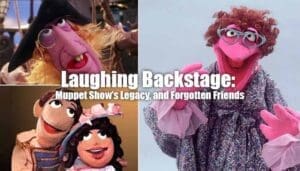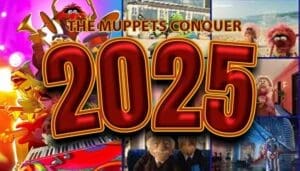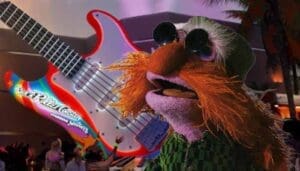When we think of Jim Henson’s Muppets, images often spring to mind of chaotic backstage antics at a London theatre or sunny days on a New York City street. Yet, beyond these iconic settings lies a rich, often overlooked history connecting Kermit, the Fraggles, Big Bird, and their creator to the Great White North. Canada, it turns out, wasn’t just a filming location for Henson; it was a creative partner, a source of talent, and the backdrop for some of the Muppets’ most beloved and ambitious projects. While Fraggle Rock‘s Toronto roots are perhaps the best-known example, the story of Henson’s Canadian connection runs much deeper, starting decades earlier and continuing to this day.
Jim Henson’s affinity for working in Canada wasn’t accidental. He began filming projects in Toronto as early as the 1960s, discovering convenient, affordable studio facilities and a wealth of skilled television production professionals. This positive history built a foundation of trust and collaboration. When the time came to find a home for the globally minded Fraggle Rock, Henson reflected on his past experiences: “We’ve had just real nice relationships in our past specials that we’ve done here… when we came up with the idea of doing it in Canada we all just loved it and it seems right for the program”. This sentiment underscores that Canada was more than just a practical choice; it felt intrinsically suited to Henson’s creative vision.
This exploration delves into that special relationship, journeying down to Fraggle Rock‘s subterranean Toronto home, uncovering the uniquely Canadian segments of Sesame Street, revisiting cherished holiday specials and movies filmed from coast to coast, and celebrating the immense Canadian talent – both in front of and behind the camera – that helped bring Henson’s magic to life.
“Dance Your Cares Away” in Toronto: The Making of Fraggle Rock
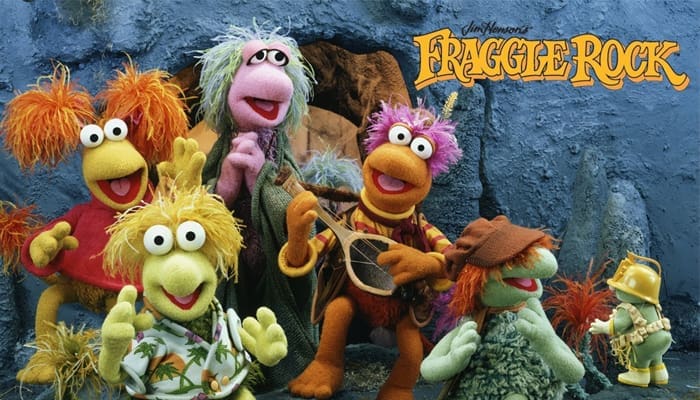
Fraggle Rock, which premiered in 1983, was born from a profoundly idealistic vision. Following the success of The Muppet Show, Jim Henson gathered his team, declaring, “I want to do a show that will change the world and end war”. This ambitious goal shaped the series’ core concept: a vibrant underground world inhabited by the carefree Fraggles, the industrious Doozers, and the giant Gorgs, three distinct species learning to coexist despite their differences. The show aimed to promote themes of interdependence, understanding, and celebrating diversity.
This very vision heavily influenced the choice of production location. Toronto, recognized as one of the world’s most multicultural cities, seemed the perfect physical embodiment of the show’s message. As one producer noted, “Given the show’s commitment to interdependence and a global consciousness, I can’t imagine it being filmed anywhere else”. The selection of Toronto wasn’t merely about finding studio space; it was a deliberate alignment of the production’s environment with its underlying philosophy of global harmony and cooperation. Henson himself felt Canada was simply “right for the program”.
Further reflecting its global aspirations, Fraggle Rock was structured as a groundbreaking international co-production, one of the first of its kind. It brought together Henson Associates (US), the Canadian Broadcasting Corporation (CBC), Home Box Office (HBO) in the US (as one of its earliest original series), and the British television company Television South (TVS). This complex partnership was essential not only for funding but also for ensuring the show reached a worldwide audience, eventually broadcasting in 95 countries. The CBC’s involvement was particularly significant. Beyond being a co-producer and the Canadian broadcaster , the CBC committed to integrating Canadian talent into the project. Jack Crane, then CBC’s director of programming, emphasized that the show would showcase Canadian creativity, estimating “over half of the creative element will be Canadian,” including musicians composing original music weekly, writers, co-directors, and technicians. This ensured Canada’s contribution was integral, making the co-production a true collaboration that mirrored the show’s themes.
The magical world of the Fraggles, Doozers, and Gorgs physically came to life on a Toronto soundstage. Specifically, the production set up shop at the Robert Lawrence Studios in the Yorkville neighbourhood. Henson was already familiar with this facility, having used it for earlier specials like Hey Cinderella! and The Frog Prince. Inside this studio, intricate sets were constructed, depicting the colourful Fraggle caverns, the delicate Doozer constructions (made famously edible for Fraggles), the imposing castle of the Gorgs, and the workshop belonging to the human character, Doc. Visual documentation from the Robert Hackborn Fonds at Toronto Metropolitan University Archives offers glimpses into the detailed craftsmanship involved in creating this immersive world. Taping began in March 1982, with the show running for five seasons until 1987.
For North American audiences (as well as viewers in Australia, New Zealand, and several other regions), the portal into Fraggle Rock was through the workshop of an eccentric inventor named Doc, played by seasoned Canadian actor Gerry Parkes, and his faithful dog Sprocket. This framing narrative, filmed in Toronto, provided a distinct Canadian anchor, contrasting with the UK version which featured a lighthouse keeper played by Fulton Mackay. The Canadian setting wasn’t merely a backdrop; it actively permeated the show. Puppeteer Jerry Nelson deliberately gave the lead Fraggle, Gobo, a Canadian accent, peppering his speech with “eh?” as a direct tribute to the host country. Fellow puppeteer Terry Angus confirmed this intentional Canadian inflection was present in early episodes. Furthermore, the adventures of Uncle Traveling Matt, the intrepid Fraggle explorer sending postcards back from “Outer Space,” frequently featured recognizable Toronto landmarks. His very first filmed expedition took place just outside the studio on Scadding Avenue , and subsequent travels saw him encountering sights like the CN Tower, which he famously mistook for “The ultimate Doozer construction”. This grounding of the fantasy in a tangible Canadian reality made the show uniquely relatable for local viewers.
Behind the scenes, the making of Fraggle Rock was an intense, demanding process involving long hours, seven days a week, yet cast and crew consistently remembered it as a period of incredible fun and boundless creativity. Producer Lawrence Mirkin recalled, “There was never an argument on the set. We all just believed that in order to make the show, we were going to make it by means of this joyful process”. This collaborative spirit extended from writing to songwriting to set design. Anecdotes paint a picture of a close-knit community: Jerry Nelson (Gobo) holding court with stories and songs at The Pilot Tavern on Cumberland Street after busy weeks ; the technical complexity of the Junior Gorg puppet requiring two performers (including Richard Hunt) ; and the memorable wrap party featuring a video imagining the Fraggles’ futures in “Fraggles Look for Jobs,” which saw Red Fraggle signing a contract to play hockey for the Toronto Maple Leafs. While Jim Henson directed several episodes and performed key characters like Cantus the Minstrel and Convincing John, he largely entrusted the show to his carefully assembled team, fostering a sense of pride and ownership among the cast and crew.
From Cinderella to Christmas: Henson’s Canadian Specials & Movies
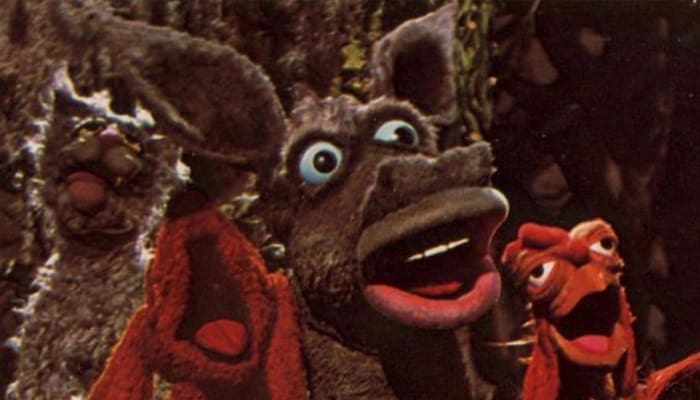
Long before the Fraggles burrowed under Yorkville, Jim Henson had already established a significant production presence in Canada, particularly Toronto. His earliest documented Canadian work dates back to 1964, filming a series of commercials for McGarry’s Sausage featuring Mack and a pre-superstar Kermit the Frog. This initial foray paved the way for more ambitious projects.
Throughout the late 1960s and early 1970s, Toronto became a go-to location for several major Henson television specials. The first of the Tales from Muppetland series, Hey Cinderella!, featuring Kermit in the classic fairy tale, was shot at the Robert Lawrence facility in 1968 (though it aired in 1970). Henson returned to Robert Lawrence Studios to film and edit The Frog Prince in 1971. Other notable Toronto productions from this era included the experimental NBC television film The Cube (1969) and the Ed Sullivan-produced holiday special The Great Santa Claus Switch (1970) , both filmed at the CFTO Television studio.
These early Canadian projects proved crucial not just for their own merit but for the relationships forged. During the making of The Frog Prince, Henson connected with key Canadian creative talents like set designer Bill Beeton and set decorator Stephen Finnie, who would go on to work on future beloved projects including Emmet Otter’s Jug-Band Christmas and Fraggle Rock. Producer Lawrence Mirkin and music director Don Gillis also became long-term Canadian collaborators stemming from these foundational years. Henson’s repeated positive experiences with Toronto studios and crews built a crucial foundation of trust and familiarity, demonstrating Canada’s capability to handle complex productions. This history directly influenced the decision to base the even larger and more intricate Fraggle Rock series there years later, as Henson himself acknowledged the importance of those “real nice relationships”.
Building on this foundation, Canada became the filming location for several iconic Muppet holiday specials and fan favourites. The enduringly popular Emmet Otter’s Jug-Band Christmas (1977), a poignant story of a poor otter family entering a talent contest, was filmed in Toronto. Given the crew continuity mentioned in Henson’s Red Book and other confirmations , it was produced at the familiar Robert Lawrence Studios. A decade later, the beloved crossover special A Muppet Family Christmas (1987), which saw Muppets, Sesame Street characters, and Fraggles converging on Fozzie Bear’s mother’s farmhouse, was also filmed in Toronto, specifically at the Glen-Warren Studios at 9 Channel Nine Court. This special was notably a US-Canada co-production and featured Fraggle Rock‘s own Gerry Parkes (Doc) among the cast. Additionally, The Fantastic Miss Piggy Show, a star-studded 1982 special, was filmed in Canada , likely in Toronto during a break in Fraggle Rock production, as puppeteer Terry Angus recalled working on it immediately following the first block of Fraggle filming.
The Canadian connection extended to the big screen and later television ventures. The first Sesame Street feature film, Follow That Bird (1985), temporarily relocated its production to Toronto, a move likely facilitated by the presence of the experienced Fraggle Rock team already based in the city. When Henson launched The Jim Henson Hour in 1989, he returned to Toronto, bringing along key Canadian Fraggle alumni like Don Gillis, Lawrence Mirkin, and puppeteer Gordon Robertson. Segments for the show, such as “Lighthouse Island,” were filmed in Canada. In later years, production ventured west. The television movies It’s a Very Merry Muppet Christmas Movie (2002) and The Muppets’ Wizard of Oz (2005) were both filmed primarily in British Columbia, utilizing North Shore Studios in North Vancouver and locations around Vancouver and Surrey. Most recently, the Muppet connection to Canada has shifted provinces, with the acclaimed Fraggle Rock reboot, Fraggle Rock: Back to the Rock (2022-present), being filmed at the Calgary Film Centre in Alberta , signaling a new chapter in Henson productions north of the border.
To provide a clearer overview, here is a summary of selected Muppet productions filmed in Canada:
| Title | Year(s) | Type | Known Canadian Location(s)/Studio(s) |
|---|---|---|---|
| Hey Cinderella! | 1970 | TV Special | Toronto (Robert Lawrence Studios) |
| The Great Santa Claus Switch | 1970 | TV Special | Toronto (CFTO Television Studio) |
| The Frog Prince | 1971 | TV Special | Toronto (Robert Lawrence Studios) |
| Emmet Otter’s Jug-Band Christmas | 1977 | TV Special | Toronto (Robert Lawrence Studios) |
| The Fantastic Miss Piggy Show | 1982 | TV Special | Toronto |
| Fraggle Rock | 1983–1987 | TV Series | Toronto (Robert Lawrence Studios) |
| Follow That Bird | 1985 | Movie | Toronto |
| A Muppet Family Christmas | 1987 | TV Special | Toronto (Glen-Warren Studios / 9 Channel Nine Court) |
| The Jim Henson Hour (segments) | 1989 | TV Series | Canada (incl. “Lighthouse Island”), Toronto production base |
| Sesame Park | 1996–2001 | TV Series | Various Canadian cities (Toronto, Vancouver, Regina etc.) |
| It’s a Very Merry Muppet Christmas Movie | 2002 | TV Movie | North Vancouver (North Shore Studios), Vancouver |
| The Muppets’ Wizard of Oz | 2005 | TV Movie | North Vancouver (North Shore Studios), Surrey, BC |
| Fraggle Rock: Back to the Rock | 2022–Present | TV Series | Calgary (Calgary Film Centre) |
Export to Sheets
Sunny Days on Sesame Park: Canada’s Unique Corner of the Street
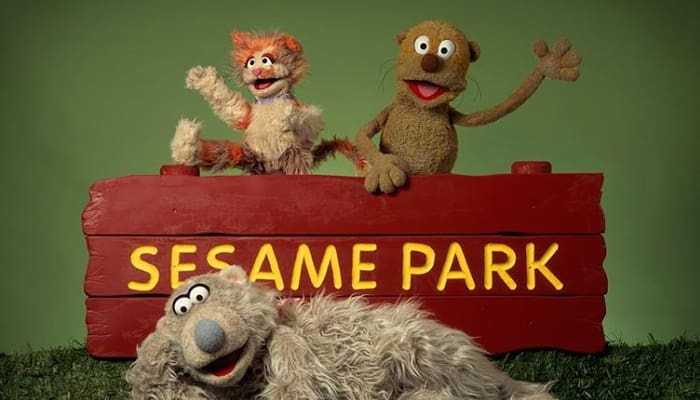
While Fraggle Rock represents a major Canadian production, the relationship between Henson’s creations and Canada extends deeply into the world of Sesame Street. Beginning in 1972 (or early 1973, accounts vary slightly), the CBC started airing Sesame Street Canada. Spearheaded by CBC producer Daniel McCarthy, this wasn’t simply a broadcast of the American show. It was a carefully adapted version where segments irrelevant to Canadian children (like those focusing on American currency, US holidays, or Spanish language instruction) were removed by editors in Winnipeg. In their place, CBC inserted specially produced Canadian content. This decision stemmed from a desire to reflect Canada’s distinct society, including its multicultural makeup and emphasis on French bilingualism, rather than the Hispanic minority focus and Spanish language elements prominent in the US version.
The amount of Canadian content grew significantly over time. Initially introduced as short interstitials during commercial breaks , the Canadian segments expanded to fill 12-15 minutes of each episode , and by 1981, comprised roughly 30 minutes of the hour-long show, later known as Canadian Sesame Street. Production wasn’t limited to one city; segments were created by CBC studios across the country, including Halifax, Montreal, Toronto, Winnipeg, Regina, and Vancouver, ensuring regional diversity. This evolution culminated in 1996 with the launch of Sesame Park. This rebranded, half-hour show represented a move towards greater independence, featuring an almost entirely Canadian focus (around 60% Canadian content) and a new setting – an outdoor park, deemed more representative of Canadian life than the original’s inner-city street. This entire trajectory, from adaptation to the creation of a distinct domestic program, highlights a substantial commitment by the CBC to foster culturally specific Canadian children’s television, using the globally recognized Sesame Street brand as a foundation. Sadly, Sesame Park was cancelled by the CBC in 2001.
The Canadian-produced segments deliberately focused on themes relevant to Canadian children: Canadian culture, history, geography, multiculturalism, regional diversity, and French bilingualism. Memorable examples abound, fondly recalled by generations of Canadian viewers. Animated shorts celebrated national symbols, like the catchy “A Quarter Has A Caribou On It” , or featured characters like Beau Beaver discussing Canadian money. French language was woven in through songs like “Je T’Aime Means I Love You” or skits featuring aliens learning French words like “la lune”. Live-action segments showcased Canadian experiences, from the iconic RCMP Musical Ride to explorations of nature like “The Whiskey Jack Trail” filmed in Ontario or Alberta. Perhaps one of the most uniquely Canadian and unforgettable segments was an operatic ode to perogies, set against the backdrop of the Ukrainian-Canadian pastries being made en masse. Even the closing credits sometimes featured distinctly Canadian locations, like the Alpine Slide Ride at Blue Mountain, Ontario. A special produced in 1990, Basil Hears A Noise, served to introduce the popular American character Elmo to the Canadian Muppet cast.
Crucially, Canada developed its own cast of exclusive Muppet characters, introduced primarily in 1987 and 1988. These included Basil the Bear (initially described as a polar bear, later just a bear with a naive personality) , Louis the Otter (a proud French-Canadian character who spoke both English and French) , Dodi (a jack-of-all-trades, often appearing as a bush pilot) , and Katie (a thoughtful girl who used a wheelchair, representing an early instance of disability representation in the Muppet world). The Henson workshop also provided versatile “Anything Muppets” that could be dressed for specific roles, leading to characters like Barbara Plum (a clear parody of esteemed CBC broadcaster Barbara Frum) and news anchor Peter Londonbridge. When the show transitioned to Sesame Park, new characters joined, including Chaos the Kitten (similar in role to Elmo) and a human friend named Ray. Many of these unique Canadian Muppet puppets are now preserved and displayed at the CBC Museum in Toronto.
Sesame Street Canada and Sesame Park also featured appearances by numerous Canadian celebrities and personalities. Singer Anne Murray was involved early on. Later, during the Sesame Park era, audiences saw guest spots from beloved Canadian figures such as comedian Steve Smith appearing as his famous character Red Green , champion figure skater Kurt Browning , and veteran actor Eric Peterson portraying Old King Cole. Award-winning actress Sheila McCarthy earned a Gemini Award for her performance on the show , and actress Janet-Laine Green also made guest appearances. While not necessarily appearing on the Canadian-specific shows, other prominent Canadian entertainers like Martin Short, John Candy, Rick Moranis, Jim Carrey, Caroline Rhea , and musician Feist have also collaborated with the Muppets over the years, further strengthening the connection between Canadian talent and the Henson world.
The Talent Pipeline: Canadians Who Made the Muppets Magic
The extensive Muppet production work undertaken in Canada provided significant opportunities for Canadian talent, particularly in the specialized field of puppetry. Major series like Fraggle Rock and Sesame Park served as crucial platforms for nurturing and showcasing these skills, contributing meaningfully to the development of this niche within the Canadian entertainment industry.
One compelling example is Terry Angus, hailing from the small town of Pugwash, Nova Scotia. A lifelong puppet enthusiast, Angus pursued an audition for Fraggle Rock in 1982. His journey highlights both the opportunities and challenges. Initially, CBC personnel expressed hesitation about his audition due to his cerebral palsy, concerned about potential disappointment. However, persistence from Angus’s supporters, including a second inquiry from Social Services, convinced them to give him a chance. Angus and his mother travelled to Toronto, overcoming his father’s anxieties about the outcome. His audition involved performing for Muppet veteran Richard Hunt and ultimately for Jim Henson himself. Angus impressed Henson with his skill and humour (having his Kermit puppet cheekily call Henson “Daddy”), leading to an immediate offer despite his young age. Angus worked as a background performer on Fraggle Rock, eventually taking over the speaking role of the Storyteller Fraggle, and even assisted on The Fantastic Miss Piggy Show. He credits his time on Fraggle Rock as a five-year master class in puppetry and television production, learning invaluable techniques and observing Henson’s respectful leadership style.
Angus was far from the only Canadian puppeteer whose career was touched by Henson productions. The Canadian Sesame Street iterations employed a host of local performers for its unique Muppet cast, including Tim Gosley (Basil Bear, 1987–96), Trish Leeper (Katie, Barbara Plum), Rob Mills (Dodi, 1987–96), Pierre Paquette (Louis the Otter), Bob Stutt (Basil Bear, 1996–2001), and Noreen Young (Dodi, 1996–2001). Gordon Robertson, another Canadian, worked on Fraggle Rock, assisted with Dodi’s flying sequences on Sesame Park, and contributed to The Jim Henson Hour. The legacy continues with the Calgary-based Fraggle Rock: Back to the Rock, which features Canadian puppeteers like Ottawa-native Jordan Lockhart (performing Wembley Fraggle) and Frank Meschkuleit. Lockhart himself noted how far the Canadian industry has come, recognizing the growing talent pool beyond traditional hubs like Toronto and Vancouver.
Beyond the puppeteers, numerous Canadians played key roles behind the scenes. Robert Hackborn, a Canadian set designer and art director for the CBC, made significant contributions to the visual world of Fraggle Rock; his collection of on-set images, sketches, and documents is now preserved at the Toronto Metropolitan University Archives, offering a unique window into the production process. As mentioned earlier, the foundational work on specials in the late 60s and early 70s introduced Henson to vital Canadian crew members who became long-term collaborators: set designer Bill Beeton, set decorator Stephen Finnie, producer Lawrence Mirkin, and music director Don Gillis all transitioned from early specials to key roles on Fraggle Rock and, for some, The Jim Henson Hour. Canadian composers Philip Balsam and Dennis Lee penned the memorable music for Fraggle Rock. Canadian director Eric Till lent his talents to directing episodes of the original Fraggle Rock and later directed A Muppet Family Christmas.
And, of course, Canadian actors brought essential human elements to these productions. Gerry Parkes’ portrayal of the kindly, slightly befuddled inventor Doc provided the crucial link between the human world and Fraggle Rock for millions of North American viewers. More recently, acclaimed Canadian actress Catherine O’Hara joined the roster of guest stars for the second season of Fraggle Rock: Back to the Rock , continuing the tradition of featuring Canadian talent alongside the Muppets.
Conclusion: The Enduring Magic of Muppets, Made in Canada
The story of Jim Henson’s Muppets and Canada is one of creative synergy and mutual benefit, stretching across decades and provinces. From the earliest commercials and groundbreaking specials filmed in Toronto studios to the ambitious, world-changing vision of Fraggle Rock brought to life in Yorkville, Canada provided fertile ground for Henson’s imagination. The evolution of Sesame Street Canada into the distinct entity of Sesame Park demonstrated a unique commitment by the CBC to adapt a global phenomenon for a domestic audience, creating culturally specific content and beloved Canadian Muppet characters. Later film productions in Vancouver and the current Fraggle Rock reboot in Calgary show the relationship continuing to evolve.
This enduring partnership yielded tangible benefits for both sides. Jim Henson and his company gained access to excellent facilities, skilled crews, talented performers, and crucial co-production partnerships, particularly with the CBC, which were vital for realizing ambitious projects like Fraggle Rock. In return, Canada saw significant economic activity, the development of specialized skills within its entertainment industry (most notably in puppetry), and the creation of high-quality, cherished children’s programming that reflected Canadian culture and values back to its audience.
Perhaps the most lasting legacy lies in the shared memories created. Whether it’s recalling Gobo Fraggle’s faint “eh?”, chuckling at Uncle Traveling Matt’s encounters with Toronto landmarks, singing along to the Perogy Polka, or remembering the warmth of Gerry Parkes as Doc, these Canadian-made Muppet moments hold a special place in the hearts of many. They represent a successful fusion of Jim Henson’s universal message of joy, creativity, and understanding with a distinct and valuable Canadian spirit, a collaboration that truly did dance its cares away, right here in the Great White North.


